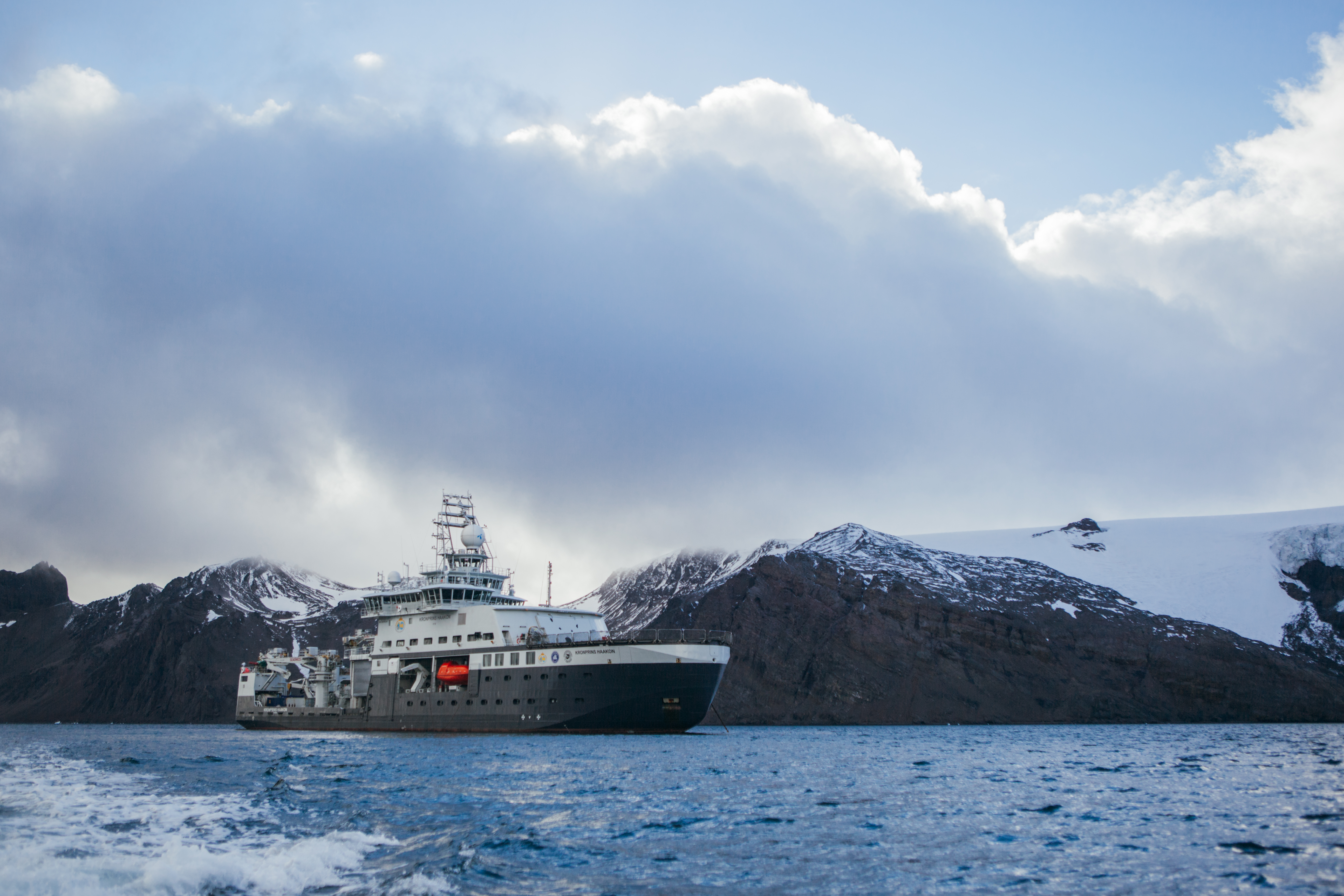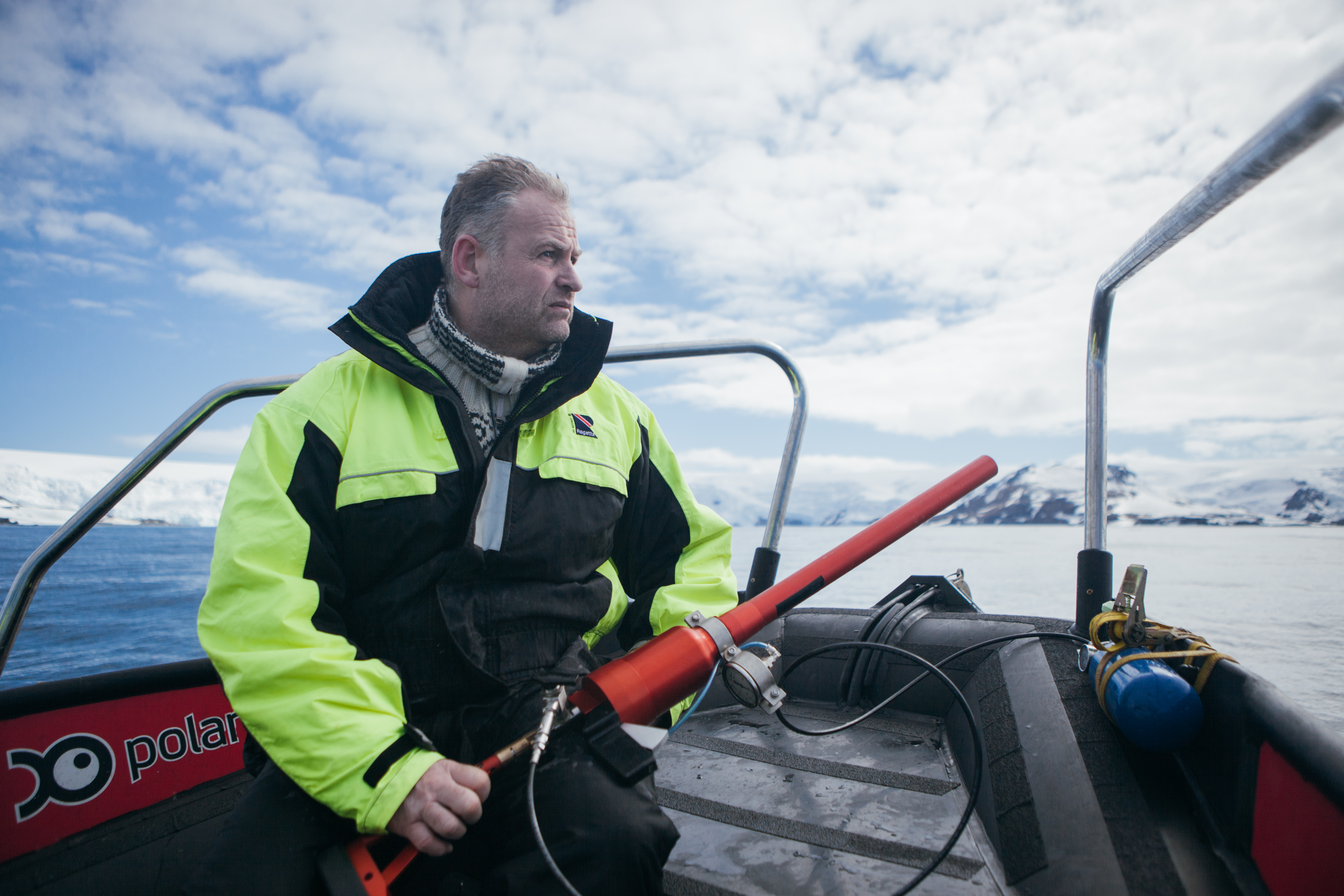72 million tonnes of krill in Antarctic fishing grounds

Scientists sorting out krill on the research vessel Kronprins Haakon.
Photo: Oda Linnea Brekke Iden/HIPublished: 22.08.2019 Updated: 26.08.2019
On 10 January this year Norway’s new research vessel, the icebreaker Kronprins Haakon, set off from Punta Arenas in Chile headed for the Antarctic.
The mission was to count the krill population in the part of the Southern Ocean where commercial fishing takes place.
The Norwegian Institute for Marine Research (IMR) led the international expedition, which involved six vessels.
The Kronprins Haakon’s part in the expedition lasted 46 days, covering a distance of more than 4,600 nautical miles and taking in around 70 sampling stations.
Krill counting in the Southern Ocean fishery
Continual echo-sounding was used to estimate the krill population.
“We took samples in what is known as Area 48, which is where most of the krill fishing takes place,” says head of the expedition and IMR scientist Bjørn Krafft.
The results are now out: the scientists estimate the krill population to be 72 million tonnes.

A small but vital species in the Southern Ocean
The Antarctic krill, Euphausia superba, grows no bigger than 6 centimetres and can weigh up to 2 grammes.
Yet the tiny crustacean plays a vital role in the Southern Ocean ecosystem.
It is the main dish on the menu for species such as whales, seals and seabirds. It is important that there is ample krill in the ocean so that the populations of large fish, sea mammals and birds remain healthy.
Changes in the volume of krill – or in the distribution of krill across the big oceans – will have a major impact on every species that eats the minute creature.
Nowadays it is mostly Norway, China, South Korea and Chile that fish for krill in the area.
Because of the key role of the krill in the ecosystem, it is crucial that we do not catch more krill than is sustainable.
The estimate will now be quality-assured against the CCAMLR and used to set quotas in the future.
The current annual quota is 620,000 tonnes, and around half that is currently being caught.
First estimate since 2000
This year’s expedition was undertaken at the same time and in the same way as the last large-scale krill survey in 2000.
That time the krill population was measured to be 60.3 million tonnes.
“A population estimate is not an absolute figure and is subject to a margin of error,” Krafft explains.
The scientists know that there are natural fluctuations in the krill population – that there are peak years, meagre years and normal years.
“Based on the annual surveys we conduct in smaller parts of the Southern Ocean, we can state that the population rises and falls from year to year, and there appear to be cycles lasting 5–6 years,” the expedition leader says.
There are annual surveys of the krill population in certain areas in the Southern Ocean, but full-scale expeditions have only been conducted twice in almost twenty years.

Rich wildlife
During the expedition the scientists observed a wide array of animals relying on krill for food.
“For instance, we spotted a large number of whales in the area. We worked systematically to count and tag the whales as we went along. We also noted plenty of penguin chicks on the islands where we went ashore.”
“We also know that some species of whale are in the process of recovering in the Southern Ocean.”
More expeditions needed
To learn more about the state of the vital krill population, the expedition leader is calling for more full-scale surveys.
It is especially important to observe how climate changes such as warming oceans impact the krill.
“To date we only have two major surveys to compare. In order to understand changes in the population, we need to survey it more often,” Krafft says.
